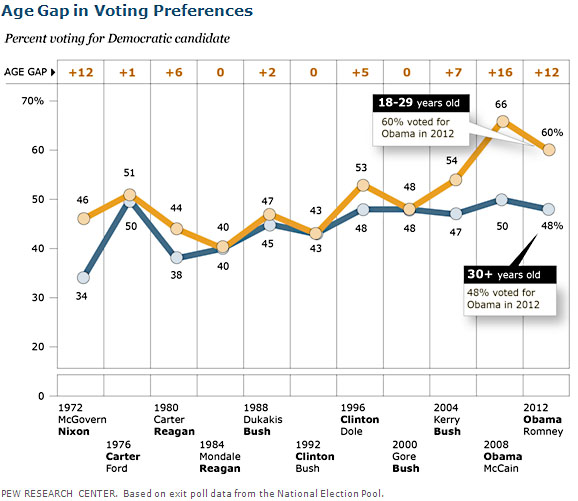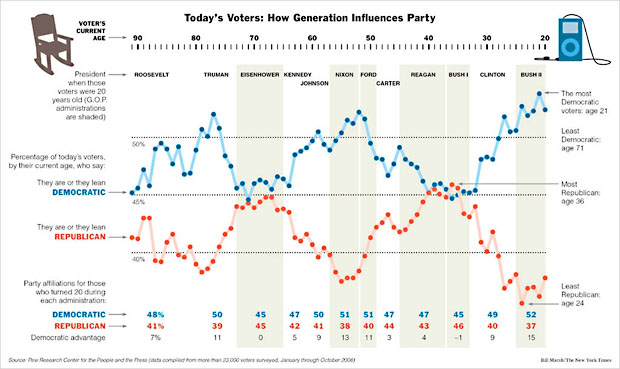Jon Chait points to a Pew study today that doesn’t really say anything new, but definitely says something worth repeating: the Republican Party may have problems with blacks and Hispanics, but their biggest problem is probably with the young. During the Bush era, the combination of the Iraq War and the resurgence of the Christian right turned off younger voters in increasing numbers, and these young voters began voting in increasing numbers for Democrats. The chart below tells the story:

In fact, things are probably even worse than this. The Pew study reminds me of a great chart that the New York Times produced back in 2006 showing the effect that presidents have on brand loyalty to their party. Basically, a popular president gains the votes of 20-year-olds, and those voters retain much of their loyalty to the president’s party for the rest of their lives. The opposite happens with an unpopular president. So Democrats spent eight years with a president that 20-somethings liked (Clinton), then Republicans suffered through eight years with a president they hated (Bush), and now Democrats have eight years of a president that 20-somethings like again (Obama). That’s 24 years worth of 20-year-olds who are likely to retain a fairly strong loyalty to the Democratic Party.
Obviously this could change. This is a tendency, not an iron law. But as these 20-somethings age, they’re going to vote at higher rates and they’re going to become more influential. And the likelihood is that most of them are going to stay Democrats. It’s hard to overstate how big a headache this is for the GOP. These are voters who, generally speaking, don’t hate gay people, don’t hate abortion, and aren’t scared by a nonwhite future. This is a problem because, as Charles Murray put it, Republicans are viewed today as “the party of Bible-thumping, anti-gay, anti-abortion creationists.” Murray seems to think this is unfair, but I don’t see why. Until and unless this changes, this huge cohort of voters is likely to remain largely in the Democratic camp.


















